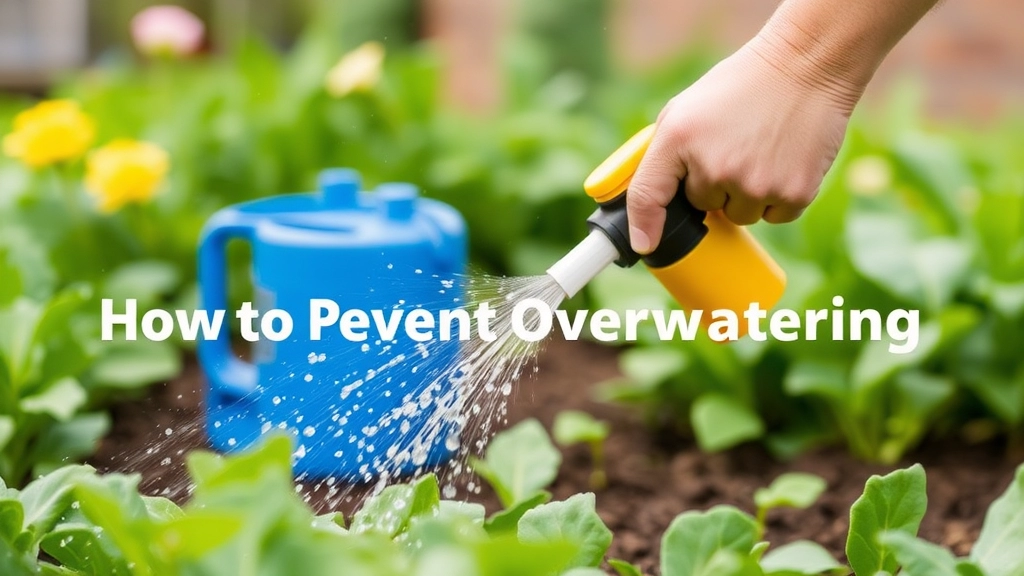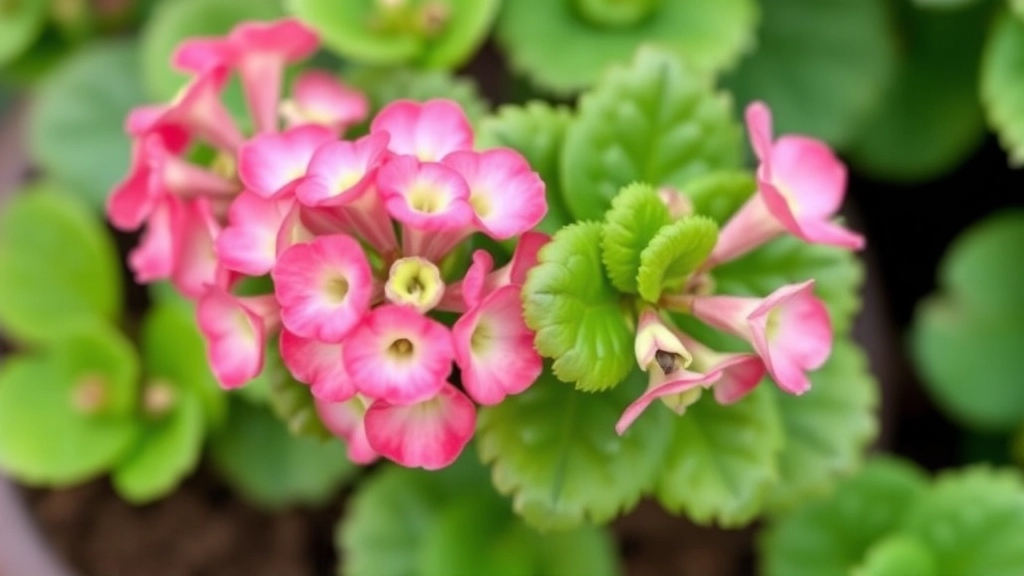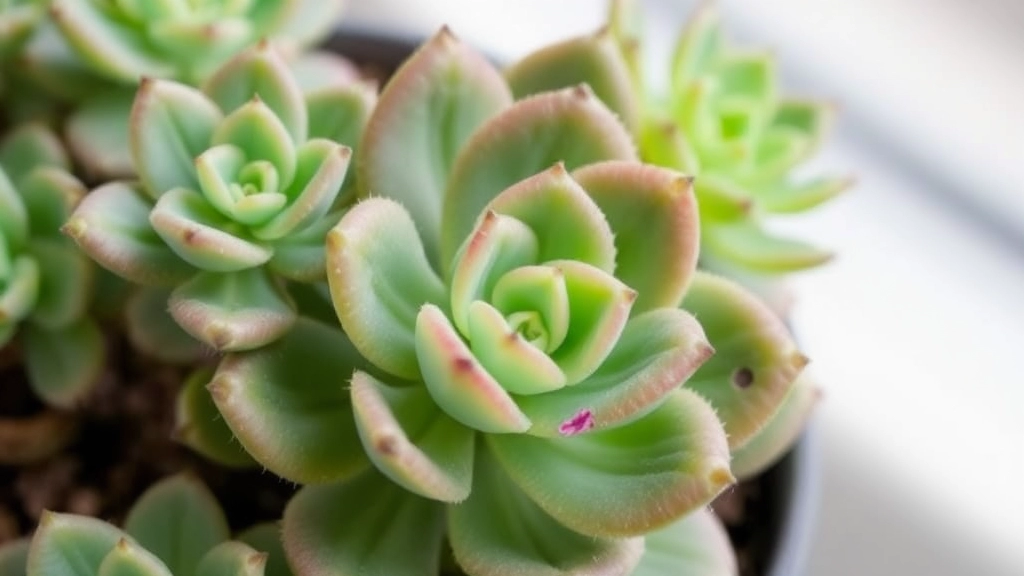How to Care for Kalanchoe Succulents
Wondering how to care for Kalanchoe succulents? You’ve come to the right place. These vibrant plants are not only easy to grow but also add a splash of colour to any space. Let’s dive into the essentials, starting with the best light conditions.
Light Conditions
Kalanchoe succulents thrive in bright, indirect sunlight. Too much direct sun can scorch their leaves, while too little light can lead to leggy growth. Aim for a spot where they get plenty of natural light without being exposed to harsh rays.
Watering
Watering is another crucial aspect of Kalanchoe care. These succulents are prone to root rot if overwatered, so it’s vital to let the soil dry out completely between waterings. A good rule of thumb is to water them thoroughly, but infrequently.
Ensure that the pot has drainage holes to prevent water from sitting at the bottom. Following these simple tips will keep your Kalanchoe healthy and blooming.
When it comes to growing Kalanchoe succulents, one of the most pressing concerns is ensuring they receive the right amount of light.
### Optimal Light Exposure
Kalanchoe plants thrive in bright, indirect sunlight. Here’s how to ensure your succulent gets the best light conditions:
– **Location**: Place your Kalanchoe near a south or west-facing window where it can soak up the sun.
– **Duration**: Aim for about 6 hours of light each day. Too little light can lead to leggy growth, while too much direct sunlight may scorch the leaves.
– **Rotation**: Rotate your plant every couple of weeks to ensure even light distribution, promoting balanced growth.
### Signs of Proper Lighting
You’ll know your Kalanchoe is happy when:
– The leaves are firm and plump.
– The plant exhibits vibrant colour.
– New growth appears regularly.
If you notice the leaves turning yellow or dropping, it might be a sign of too much direct sunlight or insufficient light.
### Adjusting Light Conditions
If you find your Kalanchoe isn’t thriving, consider these adjustments:
– **Sheer Curtains**: If the light is too harsh, using sheer curtains can diffuse the sunlight.
– **Grow Lights**: During darker months, using grow lights can help maintain the right light levels.
For more detailed care tips, you might want to check out the [ultimate guide to growing and caring for succulent plant Kalanchoe](https://planthq.org/ultimate-guide-to-growing-and-caring-for-succulent-plant-kalanchoe/). Additionally, learning about [essential Kalanchoe care tips for summer success](https://planthq.org/essential-kalanchoe-care-tips-for-summer-success/) can ensure your plant thrives year-round.
Watering Guidelines: How to Prevent Overwatering

Ever looked at your Kalanchoe and thought, “Am I giving it too much water?” You’re not alone! Overwatering is a common concern for many succulent lovers.
Kalanchoe plants thrive in dry conditions, so getting the watering right is crucial. Here’s how to keep your plant happy and healthy:
- Check the Soil: Always poke your finger about an inch into the soil. If it feels dry, it’s time to water. If it’s still damp, hold off for a few more days.
- Watering Schedule: Aim to water your Kalanchoe every 2-3 weeks during the growing season (spring and summer). In winter, you can cut back even more, watering only once a month.
- Use the Right Technique: When you do water, give it a good soak until you see water draining from the bottom of the pot. This ensures that the roots get enough moisture.
- Drainage is Key: Make sure your pot has drainage holes. This prevents water from sitting at the bottom, which can lead to root rot.
- Signs of Overwatering: Watch for yellowing leaves or mushy stems. If you spot these, it’s a red flag that you might be overdoing it.
Remember, it’s better to underwater than overwater your Kalanchoe. They can bounce back from a little drought, but they struggle when their roots are constantly wet.
When it comes to ensuring your Kalanchoe succulents thrive, the right soil mix is crucial. Many plant enthusiasts often wonder, “What type of soil is best for my Kalanchoe?”
To achieve optimal growth, consider the following key components for your soil mix:
– **Well-Draining Soil**: Kalanchoe plants prefer soil that drains quickly to prevent root rot. Look for a commercial cactus or succulent mix, which is designed for this purpose.
– **Perlite or Pumice**: Adding perlite or pumice to your soil mix enhances aeration and drainage. Aim for a mix that consists of about 50% potting soil and 50% perlite or pumice.
– **Organic Matter**: A small amount of organic matter, like compost, can provide essential nutrients. However, avoid overloading your mix with organic materials, as they can retain moisture.
– **pH Level**: Kalanchoe thrives in slightly acidic to neutral pH levels (around 6.0 to 7.0). Testing your soil can help you maintain this balance.
**Example Soil Mix Recipe:**
– 50% Cactus/Succulent Potting Soil
– 25% Perlite
– 25% Pumice or Coarse Sand
By ensuring your Kalanchoe is planted in this ideal soil mix, you’ll set the stage for robust growth and vibrant blooms. For more detailed care tips, you might find the [Ultimate Guide to Flowering Kalanchoe Care Tips](https://planthq.org/ultimate-guide-to-flowering-kalanchoe-care-tips-for-blooming/) and [Essential Fall Kalanchoe Care Tips](https://planthq.org/essential-fall-kalanchoe-care-tips-for-healthy-blooms/) particularly useful.
Temperature and Humidity Preferences

Are you wondering how to keep your Kalanchoe succulents thriving?
Temperature and humidity play a crucial role in their health.
Optimal Temperature Range
Kalanchoe plants flourish in warm environments.
- Ideal Temperature: 20°C to 25°C (68°F to 77°F) during the day.
- Night Temperature: They can tolerate cooler nights down to 10°C (50°F), but avoid frost.
Maintaining these temperatures helps promote robust growth and vibrant blooms.
Humidity Levels
Kalanchoe succulents prefer low to moderate humidity.
- Ideal Humidity: 30% to 50%.
- Avoid High Humidity: Excess moisture can lead to root rot.
If your home is particularly humid, consider using a dehumidifier or placing a small fan nearby to improve air circulation.
Real-Life Example
I once had a Kalanchoe that thrived in my sunny kitchen, where the temperature hovered around 22°C.
It bloomed spectacularly, proving that the right conditions make all the difference.
Pruning and Maintenance Tips for Kalanchoe Succulents
Many plant enthusiasts often wonder how to keep their Kalanchoe succulents thriving.
Pruning is a vital part of Kalanchoe care, ensuring your plant remains healthy and visually appealing.
How to Propagate Kalanchoe Successfully

So, you’re keen to multiply your Kalanchoe collection? Great choice! Propagating Kalanchoe is not only easy, but it’s also a fun way to expand your indoor garden without breaking the bank.
Why Propagate?
You might be wondering why you should propagate. Well, it’s a fantastic way to:
- Create new plants for yourself or gifts.
- Keep your existing plants healthy by pruning.
- Experiment with different varieties.
Methods of Propagation
There are a couple of tried-and-true methods to propagate Kalanchoe:
- Leaf Cuttings
– Choose a healthy leaf from your Kalanchoe.
– Cut it off cleanly using sterilised scissors.
– Allow the cut end to dry for a day or two to form a callus.
– Place it in well-draining soil and water sparingly until roots develop. - Offsets
– Look for small plantlets at the base of the mother plant.
– Gently separate them, ensuring a few roots are attached.
– Replant them in their own pot with a suitable soil mix.
Tips for Successful Propagation
- Light: Keep your cuttings in bright, indirect light to encourage growth.
- Soil: Use a well-draining mix; a cactus mix works wonders!
- Water: Be cautious! Too much water can lead to rot. Let the soil dry out between watering.
- Patience: Give your cuttings time. Roots can take a few weeks to form.
Common Mistakes to Avoid
- Overwatering: This is the number one killer of Kalanchoe cuttings. Stick to the dry-to-touch rule.
- Ignoring Light Needs: Too little light can stunt growth. Make sure they get enough indirect sunlight.
How to Encourage Reblooming with Light and Temperature Control
Are you struggling to get your Kalanchoe to bloom again? You’re not alone. Many plant enthusiasts face this challenge. The good news is that with the right light and temperature control, you can encourage your Kalanchoe to produce those beautiful flowers once more.
Common Pests and Solutions for Kalanchoe Plants
So, you’ve got your Kalanchoe thriving, but then you notice some unwelcome guests.
What do you do?
Let’s dive into the common pests that can invade your beloved succulents and how to tackle them head-on.
1. Mealybugs
These little fluff balls can be a real nuisance.
- Signs: White, cottony masses on leaves and stems.
- Solution:
- Dab them with a cotton swab soaked in rubbing alcohol.
- For a heavier infestation, a neem oil spray can work wonders.
2. Aphids
Aphids are tiny, but they can multiply quickly.
- Signs: Sticky residue (honeydew) on leaves and distorted growth.
- Solution:
- Blast them off with water.
- Introduce ladybugs to your garden; they love munching on aphids!
3. Spider Mites
These minuscule pests thrive in dry conditions.
- Signs: Tiny webs and speckled leaves.
- Solution:
- Increase humidity around your plant.
- Use insecticidal soap or a strong stream of water to knock them off.
4. Scale Insects
Scale can be tricky to spot since they blend in with the plant.
- Signs: Hard, shell-like bumps on stems and leaves.
- Solution:
- Remove them manually with a soft brush.
- A horticultural oil can help suffocate them.
5. Fungus Gnats
These pesky flies can be more annoying than harmful.
- Signs: Small flies hovering around the soil.
- Solution:
- Allow the soil to dry out between waterings.
- Use yellow sticky traps to catch them.
Prevention Tips
- Keep your Kalanchoe healthy: A strong plant is less likely to attract pests.
- Inspect new plants before introducing them to your collection.
- Quarantine any new additions for a few weeks.
For more detailed care tips, check out our Kalanchoe Blossfeldiana leaf care guide and our comprehensive guide to different Kalanchoe species for your garden.
FAQs on How To Care For Kalanchoe Succulent
How often should I water my Kalanchoe succulent?
During the growing season (spring and summer), aim to water your Kalanchoe every 2-3 weeks. In winter, you can cut back to watering only once a month.
What are the signs of overwatering my Kalanchoe?
Signs of overwatering include yellowing leaves and mushy stems. If you notice these, it’s a red flag that you might be giving your plant too much water.
What is the ideal temperature range for Kalanchoe succulents?
Kalanchoe plants thrive in temperatures between 20°C to 25°C (68°F to 77°F) during the day. They can tolerate cooler nights down to 10°C (50°F), but should be kept away from frost.
What humidity levels are best for Kalanchoe succulents?
Kalanchoe succulents prefer low to moderate humidity levels, ideally between 30% to 50%. High humidity can lead to root rot.
Can I propagate my Kalanchoe succulent? If so, how?
Yes, you can propagate Kalanchoe succulents through leaf cuttings or offsets. For leaf cuttings, choose a healthy leaf, let the cut end dry, and then place it in well-draining soil. For offsets, gently separate the small plantlets at the base of the mother plant and replant them.
What type of soil should I use for Kalanchoe succulents?
Use a well-draining soil mix, such as a cactus mix, to ensure that excess water can easily drain away, preventing root rot.
How much light do Kalanchoe succulents need?
Kalanchoe succulents thrive in bright, indirect light. Too little light can stunt their growth, so make sure they get enough sunlight.
What are common mistakes to avoid when caring for Kalanchoe succulents?
Common mistakes include overwatering and ignoring their light needs. Always let the soil dry out between watering and provide enough indirect sunlight.
Why should I propagate my Kalanchoe succulent?
Propagating Kalanchoe allows you to create new plants, keep your existing plants healthy by pruning, and experiment with different varieties. It’s a cost-effective way to expand your indoor garden.
What should I do if my home is very humid?
If your home is particularly humid, consider using a dehumidifier or placing a small fan nearby to improve air circulation and maintain the ideal humidity levels for your Kalanchoe succulent.
References
-
Kalanchoe Plant Care – Gardening Know How
-
How to Grow Kalanchoe Succulents – The Spruce
-
Kalanchoe: How to Grow and Care for Kalanchoe Plants – The Old Farmer’s Almanac
